We’ve seen artificial intelligence give some pretty bizarre responses to queries as chatbots become more common. Today, Reddit Answers is in the spotlight after a moderator flagged the AI tool for providing dangerous medical advice that they were…
Blog
-
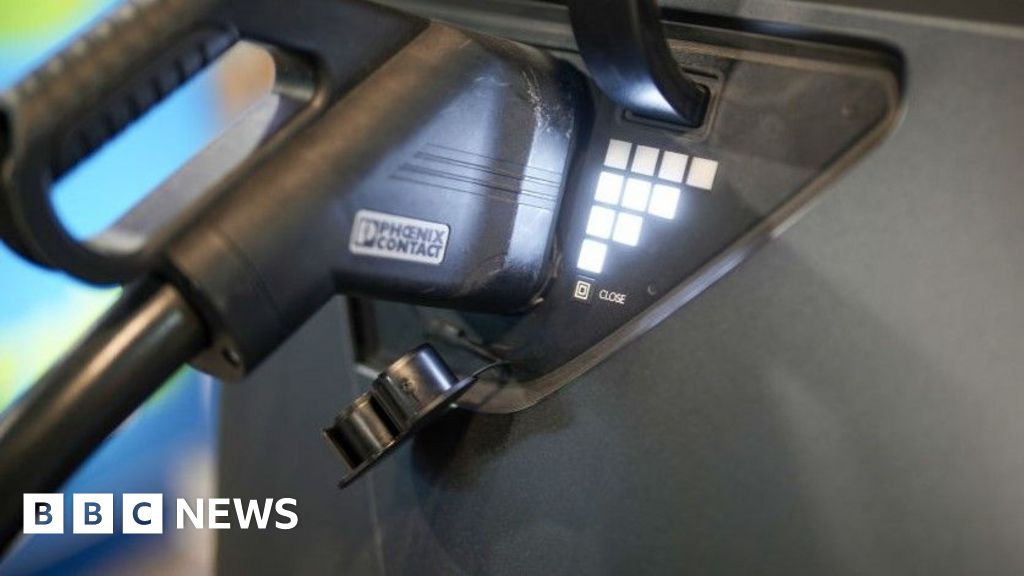
How to tell the health of a battery in a used EV
Chris BaraniukTechnology Reporter
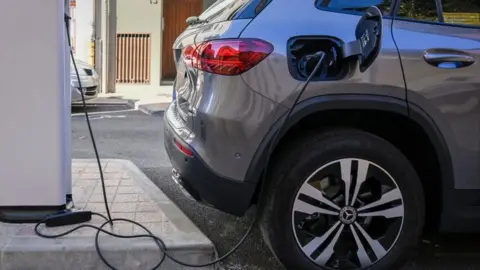 Corbis via Getty Images
Corbis via Getty ImagesBattery health is a top priority for buyers of used EVs When Kerry Dunstan and his partner set out to buy a new electric car this summer, one of the questions they asked was, “How’s the battery?”.
They’d found a 2021 Nissan Leaf with just 29,000 miles on it, and the dealer told them the condition of the battery, or its state of health (SOH), was still around 93%.
The couple were sold. For £12,500, they got an EV with a big boot and plenty of room for passengers.
Though Mr Dunstan, a cabinetmaker who also owns a somewhat snazzier electric Volvo SUV, hasn’t quite fallen in love with the aging Leaf.
“I like sporty, jazzy cars – and it’s just a bit ‘meh’,” he says.
However, he adds the Leaf has performed exactly as expected during the three months they’ve owned it.
It used to be that age and mileage were the two headline details pored over by would-be buyers of second-hand cars. But as more people shift to electric, scrutinising the health of a car’s battery has become arguably even more important.
How has that battery been treated? Did the last owner regularly fast charge it to 100%, for example? That has the potential to shorten an EV battery’s lifespan.
This battery black box problem has put some consumers off buying a second-hand EV. But battery analytics firms say they can reveal the condition of an old EV’s battery with high accuracy. And industry experts say some EVs are lasting longer than many predicted.
Take Mr Dunstan’s Nissan Leaf. This is a model of EV built without the kind of sophisticated, liquid-based battery cooling system common to many other EVs. While Nissan has rectified this in the latest generation of Leafs, earlier models show a considerable shortening of their range year by year, according to data analysed by US insurance and research firm NimbleFins.
Mr Dunstan is unfazed. “I charge both my EVs to 100% and I put them on charge when I need to charge them – I don’t worry about it,” he says.
 Kerry Dunstan
Kerry DunstanThe performance of Kerry Dunstan’s used EV has met his expectations For people in the market for a second-hand EV who are plagued by battery anxieties, however, Austria-based firm Aviloo says it has a solution. “We really can, completely independently, determine the state of health of a battery,” says chief product officer, Patrick Schabus.
Aviloo is one of several battery analytics businesses in the market. The company, which provides battery health certificates for major UK outlet British Car Auctions, offers two products.
There’s a premium test, where EV owners plug a data logging box roughly the size of a glasses case into their car so that it can monitor battery performance while they use the car over a few days, going from 100% charge down to 10%.
Or, they can opt for a quicker flash test, which uses a different box to suck up data from the car’s battery management software and then analyse it with the help of a computer model. “We can do this at a standstill in under two minutes,” says Mr Schabus.
The premium test observes battery discharge closely, picking up fluctuations in current or voltage, and can reveal extra detailed information about the health of individual cells in the battery, says Aviloo.
Marcus Berger, Aviloo’s chief executive, says his company’s analytics results sometimes diverge “substantially” from the battery SOH percentages produced by some cars’ own built-in analytics systems.
He challenges conventional wisdom that batteries with an SOH below 80% are too far gone: “An EV with a state of health below 80% can still be a great car… It just needs to be priced [appropriately].”
In New Zealand, EV owner Lucy Hawcroft, who works in a sustainability role for an infrastructure firm, bought a Nissan Leaf with her husband roughly three years ago. She recalls getting an SOH result of 95% or so from the dealership. But a year later an independent mechanic checked the SOH again for them.
“It dropped quite a bit,” she recalls. “My husband was a bit surprised, or concerned, about that.”
However, the car still has a range of around 160km (100 miles) when fully charged. The pair mostly use it for short journeys of up to 10km. Mrs Hawcroft says she has friends whose EVs have much bigger ranges, of around 400km: “That would be ideal.”
For David Smith, sales director at Cleevely Electric Vehicles in Cheltenham, being able to analyse used EVs’ batteries in detail is a deal-maker. Most customers ask for this information, he says. His company uses SOH reports from ClearWatt, another battery analytics firm.
“They’re completely independent. We can’t interfere with the reports,” he says. “Once customers have seen the report, that aids the sale nine times out of 10.”
Matt Cleevely, managing director at Cleevely Electric Vehicles, adds that it’s often possible to replace groups of cells or modules within a battery pack – far cheaper than installing a whole new battery.
 Lucy Crawford
Lucy CrawfordLucy Crawford was surprised by the drop off in battery health of her EV As for how you should charge your own EV in order to best take care of its battery, Simona Onori at Stanford University says, “There is likely a sweet spot between frequent fast charging and avoiding it altogether.” However, she adds that, to her knowledge, this is not something that has yet been thoroughly studied.
Despite some consumers’ wariness, battery technology has noticeably improved in recent years, says Max Reid, head of battery costs at market research firm CRU. “The older batteries might last maybe 500 to 1,000 [charging] cycles,” he explains. “Now, it’s 10,000 cycles in some of these new EV cells coming out.”
Batteries that are no longer good enough for the EV they were designed for can still be useful, says Paul Chaundy at Second Life EV Batteries, in Dorset. For instance, some of his customers are businesses that use former EV batteries to store electricity at their premises. They might have, say, six electric forklifts but a grid connection only large enough for charging ports to supply two or three of the forklifts.
Regarding the varying methodologies car manufacturers use to generate SOH reports for their own vehicles, Mr Chaundy says, “We need more standards around that, I think.”
More Technology of BusinessContinue Reading
-
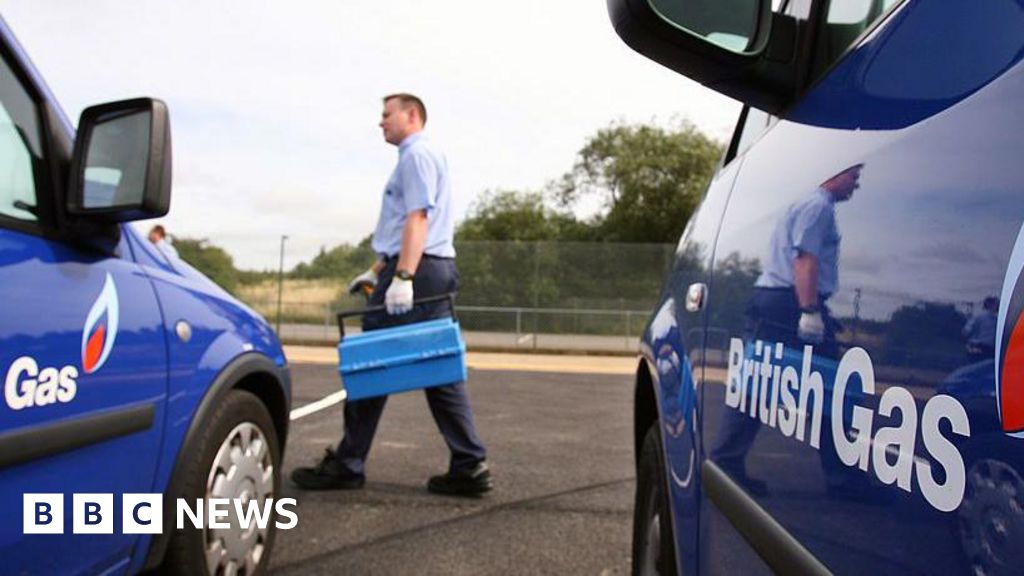
Centrica and Holland & Barrett fined for underpaying staff
British Gas’s parent company Centrica, Euro Garages and Holland & Barrett are among the latest companies named and shamed by the government for underpaying staff.
The Department for Business and Trade (DBT) has released a list of nearly 500 employers fined more than £10m for failing to pay the national minimum wage. It said 42,000 workers were repaid more than £6m.
Business Secretary Peter Kyle said: “I know that no employer wants to end up on one of these lists. But our Plan to Make Work Pay cracks down on those not playing by the rules.”
All three firms blamed past payroll problems for the underpayments and said all affected staff had been remunerated.
All the employers named on DBT’s list were fined up to double the total amount they owed to staff, some for underpayments dating as far back as 2013.
Paul Nowak, the TUC general secretary, said there was “no excuse for workers being cheated out of money they’re owed. It’s bad for workers, families and the economy.”
According to the government’s latest investigations between 2018 and 2023, Euro Garages, known as EG Group, is top of the list short-changing 3,317 of its workers by a hefty sum of more than £824,000.
The company, which was co-founded by billionaire brothers Mohsin and Zuber Issa but who have since stepped back from leading the firm, has significantly reduced its UK operations over the past year.
It sold its UK petrol forecourts business and Cooplands bakeries, but still runs some Starbucks franchise stores across the UK.
In a statement, an EG Group spokesperson said: “These historic payroll issues that took place between 2015 and 2019 have been fully rectified.
“All affected employees were subsequently reimbursed in full in agreement with HMRC.”
The firm said it improved its systems to make sure it complied with UK laws and maintained that it was committed to treating employees fairly.
Centrica, which owns British Gas, was eighth on DBT’s list having failed to pay £167,815 to 356 workers.
The energy giant recently bought one of the biggest liquefied natural gas (LNG) facilities in the UK for £1.7bn, extending the firm’s control of the country’s energy supplies.
A Centrica spokesperson said the company supported fair pay and pointed to technical faults in its payroll system between 2015 and 2019.
“This issue relates to a small number of historic technical errors which was put right as soon as it was identified.
“The total underpayment related primarily to salary sacrifice arrangements and training bonds, rather than take home pay, and was around £160,000 – our UK annual wage bill is currently around £1.2bn.”
High street retailer Holland & Barrett is next on the list after it failed to pay more than £153,000 to 2,551 workers.
In a statement, the company said past issues with minimum wage payments, between 2015 and 2021, had since been fixed in 2022.
“This was not a case of deliberate underpayment,” said a spokesperson.
“The issue stemmed from legacy practices such as requiring team members to wear specific shoes, unpaid training completed at home, and time spent preparing for shifts at our Burton distribution site.”
Holland & Barrett said it remained “committed to fair pay” and that it was paying store staff about 5% above the National Living Wage and follows all rules.
“While we respect the transparency of the scheme, we are disappointed that naming has occurred over three years after the matter was settled.”
The minimum wage for over 21s, known officially as the National Living Wage, is currently £12.21 an hour. Younger employees – aged between 16 and 20 – are entitled to receive the National Minimum Wage, which is set at £10 and hour.
Continue Reading
-
Geopolitical shifts, uncertainty, and investment: Evidence from the EIB Investment Survey 2025
Global geopolitics has been a tremendous source of uncertainty in 2025. Compounding the uncertainty has been questions about the short-term and permanent impact these changes will have on the real economy, particularly on trade and private-sector investment. Major forecasters have been revising their forecasts, as the underlying assumptions about the impact of US tariffs change. For the EU, growth projections were considerably revised downward in the spring (European Commission 2025), but now the consensus seems to be shifting, recognising a better than expected economic performance in the short term. The lack of strong EU retaliation on US tariffs, the partially reduced uncertainty due to the trade agreements, the potential opportunities emerging from a multi-polar system, and a boost to public investment (for defence) are leading most institutions to revise their growth expectations slightly upwards (Lagarde 2025; OECD 2025, IMF 2025). But what is happening to investment by European firms? How are they responding to the changed trading environment and other political shifts, such as the Trump administration’s position on climate change? How do the reactions of European firms differ from those in the US?
The 2025 edition of the European Investment Bank Investment Survey (EIBIS) sheds some light on these questions (EIB 2025). Conducted annually since 2016, the EIBIS is a unique survey of approximately 13,000 firms across all 27 EU members, with an additional sample from the US. The survey collects data on the characteristics and performance of firms, past investment activities and future plans, sources of finance, financing issues, and other challenges such as climate change and digital transformation. Interviews for the 2025 edition of the survey were carried out over the summer.
Investment by firms has proved resilient so far
After several years of acceleration, the investment appetite of European and American firms is weakening (Figure 1). However, instead of the feared collapse, investment seems to be stabilising as firms continue to invest. The share of EU firms investing remained roughly stable at 86%, compared with 87% in last year’s survey. A marginally higher share of EU firms still expects to increase rather than decrease investment in 2025, although this indicator also points to an easing of investment growth. The pattern in the US is broadly similar, but US firms’ expectations have been revised down from a much more buoyant level.
Figure 1 Investment cycle and evolution of investment expectations
Source: European Investment Bank – EIBIS 2021-2025.
Investment activities differ on the two sides of the Atlantic. While EU firms are more likely to invest in replacing capacity, US firms are looking to expand. In the EU, firms have devoted a significant portion of their investment (35%) to intangible assets (such as research and development, training, and software), investing less in land, buildings, and infrastructure than US firms (17 versus 22%). Over the next three years, EU firms will continue to prioritise investment that replace rather than expand capacity, with the share of firms investing to expand operations 11 percentage points below that of the US (26% of EU firms versus 37% of US firms).
While EU firms continue to invest, they have a negative outlook on the political and regulatory environment and the overall economic climate, with more firms expecting the situation to deteriorate rather than improve in the next 12 months. They also have a balanced view of the business prospects in their sector (Figure 2). In the US, firms are neutral on the political climate (on balance) and somewhat positive on business prospects and the general economic climate.
Figure 2 Firm perceptions of short-term investment drivers and constraints
Source: European Investment Bank – EIBIS 2018-2025.
Note: (*) Net balance is the share of firms expecting an improvement minus the share of firms anticipating a deterioration. Negative values thus imply that more firms expect a deterioration than an improvement.Adjusting supply chains: US firms focus on domestic sources while EU firms balance efficiency and resilience
The trade views of EU and US firms differ widely, as well as the economic impacts across various countries (Kawasaki 2025). Among firms engaged in trade, US firms are markedly more concerned about changes in customs and tariffs than EU firms (77% versus 48%). The share of concerned firms in the US has doubled, while in the EU the increase has been marginal (Figure 3). Tariffs have dominated the news, but compliance with new regulations, standards, or certifications remain a concern for many firms. Concerns about other supply chain disruptions have continued to ease in the EU and the US.
Figure 3 Obstacles related to external trade
Note: * Base: All firms; ** Base: All importers and exporters
Source: European Investment Bank – EIBIS 2024-2025.The tariff shock immediately affected US supply chains, leading firms to look for domestic suppliers and retrench on trade. With government policies that encourage domestic production and expectations that tariffs will make imports more expensive, a relatively high share of US firms are increasing inventories, substituting imported goods for domestic ones, and diversifying the countries from which they import. EU firms, by contrast, are adopting a more measured approach, balancing efficiency and resilience in their supply chains: only 7% of European firms are engaging in import substitution strategies, reducing their share of imported goods and services, while 19% are diversifying the number of countries from which they import.
Figure 4 Changes in sourcing strategy
Note: Base: All firms; *Base: All firms that import
Source: European Investment Bank – EIBIS 2024-2025.Green transition: EU firms stay the course
EU firms appear more aware of the consequences of the net zero transition than their American counterparts (Figure 5). When looking at transition risks, EU firms are aware of risks (particularly in Eastern Europe and in some of the Central European countries) and slightly more aware of the opportunities the transition presents (particularly in Northern Europe).
As a result, 92% of EU firms have taken action to reduce greenhouse gas emissions, a much higher share than in the US across various investment categories. A higher share of EU firms is investing in waste minimisation, energy efficiency, sustainable transport, renewables, and green innovation. EU firms, particularly larger ones, are also more likely to have performed energy audits or to have their own greenhouse gas emission targets. One notable fact is that the share of US firms that see the transition to a net zero emission economy as a risk has significantly declined since 2024.
Figure 5 Firm perceptions of the impact of the green transition over the next five years
Note: Base: All firms (excluding don’t know/refused responses)
Source: European Investment Bank – EIBIS 2024-2025.Firms are more aware of the physical risks associated with climate change and are slowly starting to act on climate adaptation. On both sides of the Atlantic, the share of firms faced with costs from extreme climate-related events is high: 68% in Europe, and 64% in the US. The share of firms acting to deal with physical risks has increased steadily and is relatively similar (55% in the US, 53% in the EU), however, US firms are more likely to have implemented adaptation strategies or investments. The number of firms investing in adaptation is increasing.
EU firms are investing in digitalisation and AI, but could benefit from applying new technologies more widely
EU firms have accelerated their adoption of advanced digital technologies to the extent that they their adoption rate now matches those of US firms. This trend is particularly strong in large firms and in the manufacturing sector. A new question in this the EIBIS 2025 survey shows that the adoption rate of generative AI technology is roughly the same on both sides of the Atlantic, at 37% in the EU versus 36% in the US. However, US firms that use big data or AI technologies tend to apply them across more business areas than their European counterparts, highlighting a continuing challenge for adoption in Europe (Figure 6).
Figure 6 Business areas in which AI tools are used (% of firms)
Source: European Investment Bank – EIBIS 2024-2025.
Simplification and integration of the EU Single Market present opportunities
The 2025 survey underlines the importance of simplifying regulation, procedures and market access in the EU. Time spent meeting regulatory requirements is significant for EU firms, with the cost estimated at some 1.1% of companies’ turnover, and as much as to 1.8% among small and medium enterprises.
Deepening the Single Market remains equally vital to enhancing the EU’s competitiveness: 62% of EU firms perceive the EU market as fragmented for their main product, a share unchanged from 2024. Many barriers remain a drag on investment by firms. Uncertainty remains the most frequently cited barrier, weighing even more on EU than US firms (83% of EU firms are concerned, compared with 68% of US firms). Availability of skills comes second for EU firms (79%), followed by energy costs (75%) and business regulation (69%). Energy costs remain much more of an impediment for firms in the EU than in the US.
Alongside simplification and market integration, policy incentives also matter. Especially in a period in which policy support needs to balance the strategic priorities with considerations related to debt sustainability (Bouabdallah et al. 2025). Overall, 16% of EU firms that invest were supported by EU policies, compared to 13% among US firms. EU firms have better access to finance at favourable rates than US firms, and comparable access to grants and subsidies. The EIB Investment Report (EIB 2025b), released in March 2025, showed that targeted policy support is more effective. In the EU, policy support tends to be more targeted and ‘greener’ – indeed, policy support is more likely to be linked to a specific objective (61% in Europe, compared with 43% in the United States), with the green economy and innovation being the main policy priorities.
References
Bouabdallah, O, E Dorrucci, C Nerlich, C Nickel and A Vlad (2025), “Time to be strategic: How public money could power Europe’s green, digital, and defence transitions”, VoxEU.org, 29 July.
EIB (2025a), EIB Investment Survey 2025: EU Overview.
EIB (2025b), Investment Report 2024/2025: Innovation, integration and simplification in Europe.
European Commission (2025), Spring 2025 Economic Forecast: Moderate growth amid global economic uncertainty.
IMF (2025), World Economic Outlook Update, July 2025: Global Economy: Tenuous Resilience amid Persistent Uncertainty.
Kawasaki, K (2025), “Economic impact of US tariff hikes: Significance of trade diversion effects”, VoxEU.org, 15 September.
Lagarde, C (2025), “Trade wars and central banks: lessons from 2025”, speech by Christine at the 4th Bank of Finland International Monetary Policy Conference, 30 September.
OECD (2025), OECD Economic Outlook, Interim Report: Finding the Right Balance in Uncertain Times, September.
Continue Reading
-
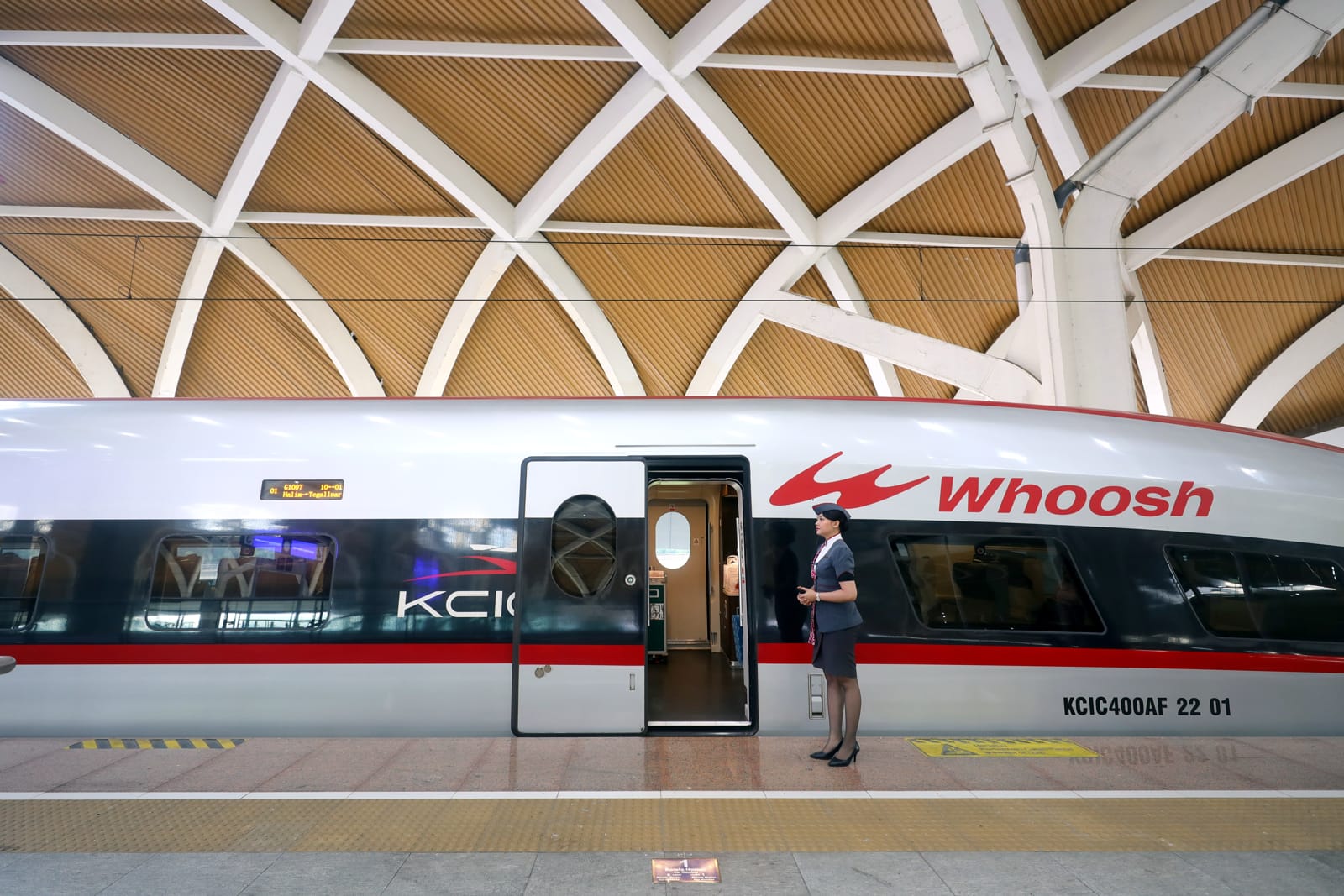
Signal failure for China’s railway diplomacy in Southeast Asia
News this week that Indonesia has entered debt restructuring negotiations with China over its Jakarta-Bandung high speed rail mega-project should have come as no surprise.
Indonesian officials announced publicly more than three years ago, before the rail became operational, that it would be 40 years before the project broke even. Uncertainty around a planned relocation of the capital to the island of Borneo complicated the projections for user numbers. But even as those plans lie dormant and underfunded, the head of the state-owned rail operator labelled the project a financial “ticking time bomb”.
China’s exports of its high-speed train expertise and financing packages constitute a hallmark of its offer as a development partner to Southeast Asia.
But construction in Indonesia was marred from the start, leading to a delay of four years and a cost blow-out of $1.2 billion above the original estimate. The Jakarta-Bandung was Southeast Asia’s first high-speed railway, known as Whoosh, but it is one in a series of similar China-backed projects at varying levels of completion. Officials around the region will be closely watching these negotiations.
There is precedent. In both Thailand and Malaysia, high-speed rail projects that were originally backed by Chinese loans were renegotiated and restructured after disputes about perceived debt traps and corruption. Construction on both is proceeding, but with drastically reduced reliance on finance from China.
A similar story is unfolding in the Philippines, though the problem there is arguably more political than fiscal. Three rail projects, worth an estimated total of US$5 billion in concessional loans from China, were cancelled in 2023 amid deteriorating bilateral ties.
Whoosh it is one in a series of similar China-backed projects at varying levels of completion across the region (Yasuyoshi Chiba/AFP via Getty Images) Things are different in the smaller countries of mainland Southeast Asia. Lessons in railway debt negotiations might come too late for Laos, where a line from Vientiane to Boten on the border with China was completed in 2021. The Asian Development Bank has predicted that the project and the associated loan could “present a very large contingent liability” and deemed it “unlikely to bring major economic benefits.”
Cambodia is also eager to attract China’s support for a US$4 billion high-speed rail, despite some recent unexplained lapses in financing from Beijing to Phnom Penh.
In Myanmar, the ostracised junta is reportedly still seeking financing from China for the long-debated Muse-Mandalay railroad, part of the troubled China-Myanmar Economic Corridor. For Myanmar’s crippled and fragile economy, the risk of an unsustainable debt burden is immense.
It’s plain that the shine has not totally worn off China’s infrastructure mega-projects in Southeast Asia.
Outside of Jakarta, the keenest eyes on the restructuring negotiations will likely be in Hanoi. In February, Vietnam approved loans from China to build a new conventional railway in the north of the country. The exact amount of that financing package isn’t clear yet, but the project is estimated to cost more than US$8 billion in total.
Additionally, Hanoi’s breathless ambition for a north-south high-speed rail won’t be deterred by the astronomical bill, close to US$70 billion. Officials have, at various points in the past 12 months, sworn off and welcomed foreign funding. China appears the front-runner to supply the technology but Japan, the region’s second-largest transport provider, has also expressed interest.
Given sustained interest from Myanmar, Cambodia and Vietnam, it’s plain that the shine has not totally worn off China’s infrastructure mega-projects in Southeast Asia. But the financial floundering of the region’s first high-speed rail, in the region’s largest country, ought to prompt second thoughts.
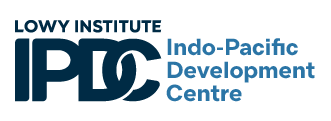
Continue Reading
-

Samsung Powered Three Days of Wellness, Running and Skateboarding in Paris With Wearable Technologies – Samsung Mobile Press
Under Paris’s autumn skies, the French capital came alive during the Vredestein 20 km de Paris from Oct. 10-12. Samsung hosted multiple pop-up experiences like a Street League Skateboarding…
Continue Reading
-

Ace Frehley, Kiss lead guitarist and band’s cofounder, dies aged 74 | Kiss
Ace Frehley, the lead guitarist and co-founder of the rock band Kiss, has died aged 74.
The musician died after suffering injuries during a fall in September, his family said in a statement.
“We are completely devastated and heartbroken,”…
Continue Reading
-

Golden Globes Announces Tribute Event in Brazil 2026
The Golden Globes announced it will host an event in partnership with Urland Ventures celebrating Brazilian film and television talent, scheduled for March 2026 in Rio de Janeiro.
“The Golden Globes has a long history of recognizing…
Continue Reading
-
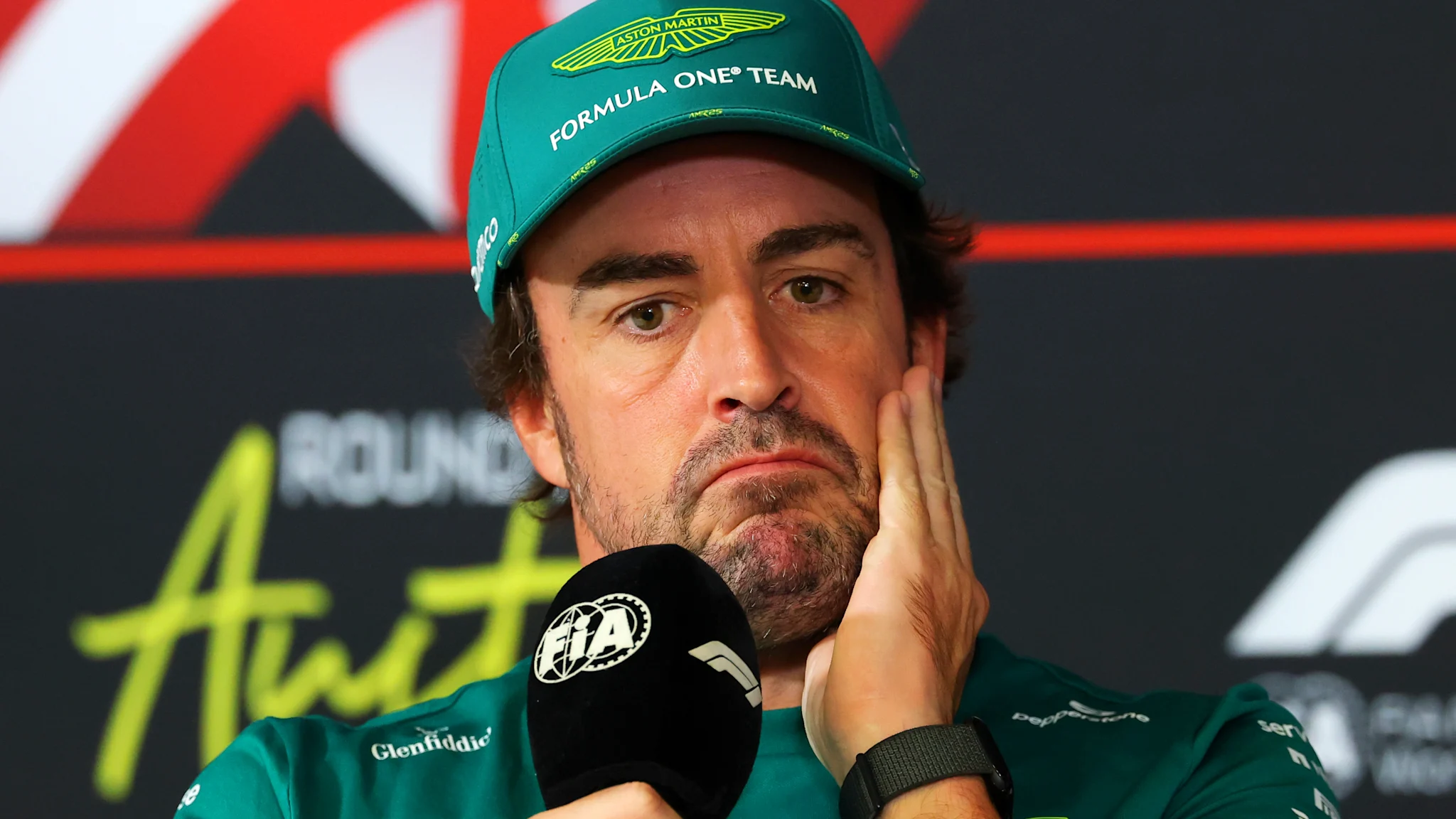
FIA Thursday press conference – 2025 United States Grand Prix
PART TWO – Gabriel BORTOLETO (Kick Sauber), Max VERSTAPPEN (Red Bull Racing), Lewis HAMILTON (Ferrari)
Q: Lewis, can we start with you? I can see the headlines now: Ferrari driver on a prancing horse. Tell us what you’ve been up to during the…
Continue Reading


